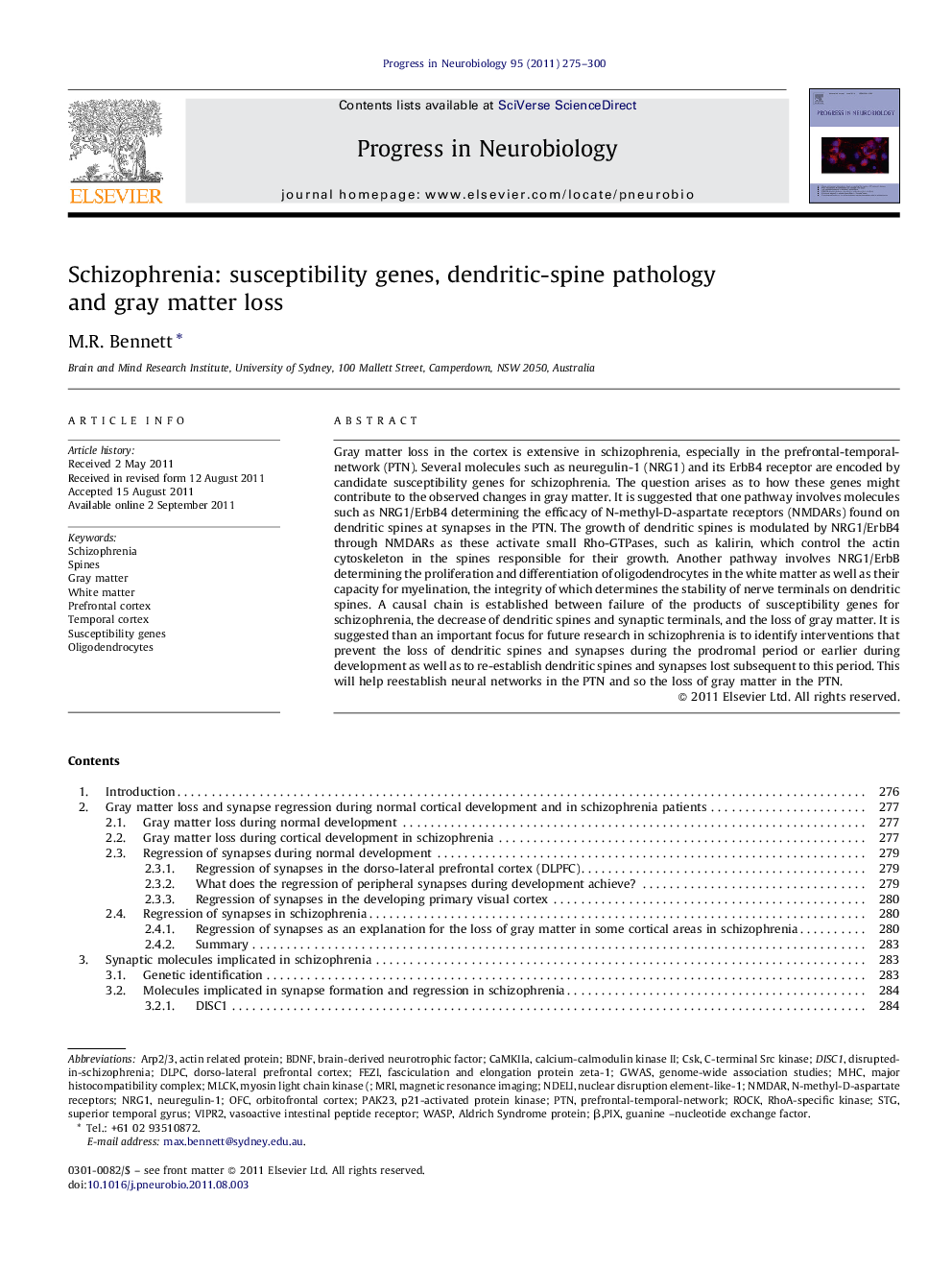| Article ID | Journal | Published Year | Pages | File Type |
|---|---|---|---|---|
| 4353586 | Progress in Neurobiology | 2011 | 26 Pages |
Gray matter loss in the cortex is extensive in schizophrenia, especially in the prefrontal-temporal-network (PTN). Several molecules such as neuregulin-1 (NRG1) and its ErbB4 receptor are encoded by candidate susceptibility genes for schizophrenia. The question arises as to how these genes might contribute to the observed changes in gray matter. It is suggested that one pathway involves molecules such as NRG1/ErbB4 determining the efficacy of N-methyl-D-aspartate receptors (NMDARs) found on dendritic spines at synapses in the PTN. The growth of dendritic spines is modulated by NRG1/ErbB4 through NMDARs as these activate small Rho-GTPases, such as kalirin, which control the actin cytoskeleton in the spines responsible for their growth. Another pathway involves NRG1/ErbB determining the proliferation and differentiation of oligodendrocytes in the white matter as well as their capacity for myelination, the integrity of which determines the stability of nerve terminals on dendritic spines. A causal chain is established between failure of the products of susceptibility genes for schizophrenia, the decrease of dendritic spines and synaptic terminals, and the loss of gray matter. It is suggested than an important focus for future research in schizophrenia is to identify interventions that prevent the loss of dendritic spines and synapses during the prodromal period or earlier during development as well as to re-establish dendritic spines and synapses lost subsequent to this period. This will help reestablish neural networks in the PTN and so the loss of gray matter in the PTN.
► Gray matter loss is extensive in the prefrontal-temporal-network in schizophrenia. ► This loss is quantitatively accounted for by loss of dendritic spines. ► Many susceptibility gene products function in dendritic spines. ► Neuregulin1-ErbB4 so acts and leads to compromised NMDA receptors. ► This leads to a loss of dendritic spines. ► Normal function of the prefrontal-temporal-network is then lost in schizophrenia.
